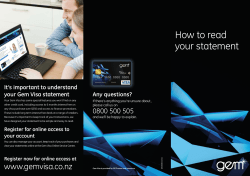
Integrated Marketing Communications Promotional Strategies at a Glance Chapter 14
Integrated Marketing Communications Promotional Strategies at a Glance Chapter 14 The Changing Nature of Marketing Communication Before communication was largely mass media based. Even though this may still be true, this is changing to include alternative methods, that are more personal and interactive, i.e., social media, viral marketing. Traditional Marketing Mix Product Advertising Price Promotion Sales Promotions Direct Marketing Distribution Personal Selling Publicity Communication Model (Exhibit 14-3) Noise Source Encoding Noise Message Channel Feedback Decoding Receiver Hierarchy of Communications Effects Purchase Conviction Preference Liking Knowledge Awareness Brand ignorance Visit Exhibit 14-5, page 398 Factors Affecting the Use of Promotional Tools Nature of the market Nature of the product/service Price of product Stage(s) of the Product Life Cycle Budget/Funds available Company Objectives Message to be conveyed Time and location of buying decision Media characteristics Promotional Strategy An activity that informs, persuades and influences the consumer in making a purchase decision. A promotional strategy is also referred to as Marketing Communications. Combining the various promotional tools is called the promotional mix. Firms may use one promo tool, or all of them. This is dependent on many factors. Message Strategy Need a good message to communicate Will have to break through advertising clutter and catch the attention of the target audience Effective message strategy begins with identifying customer benefits, related to product’s positioning Need a creative concept, or “big idea” to express that message For example, www.campaignforrealbeauty.ca/ Campaign Objectives Image building Product Differentiation Positioning Strategies What is St.FX’s positioning Strategy? Who is this communicated? Direct response Promotional Strategies Push strategy Promotional effort directed at channel members to carry and promote products to consumers Driven by personal selling and trade promotions Pull strategy Promotional effort to appeal directly to consumers Driven by advertising and sales promotion Push vs. Pull Strategy
© Copyright 2025





















